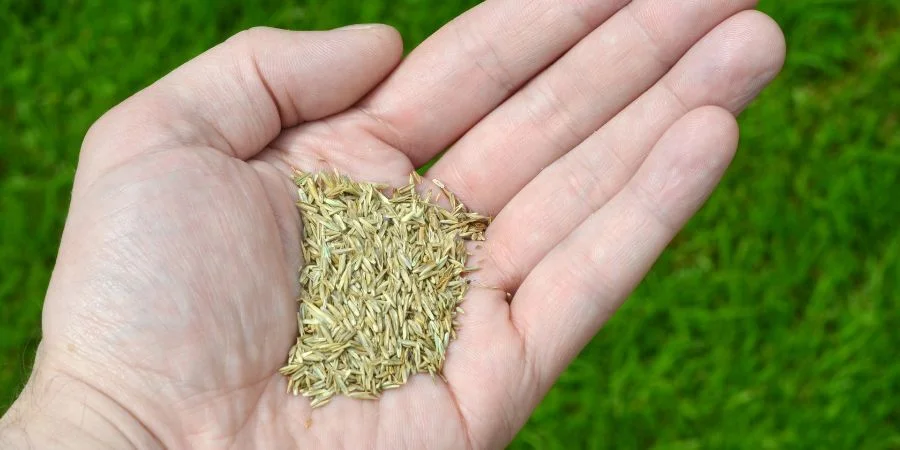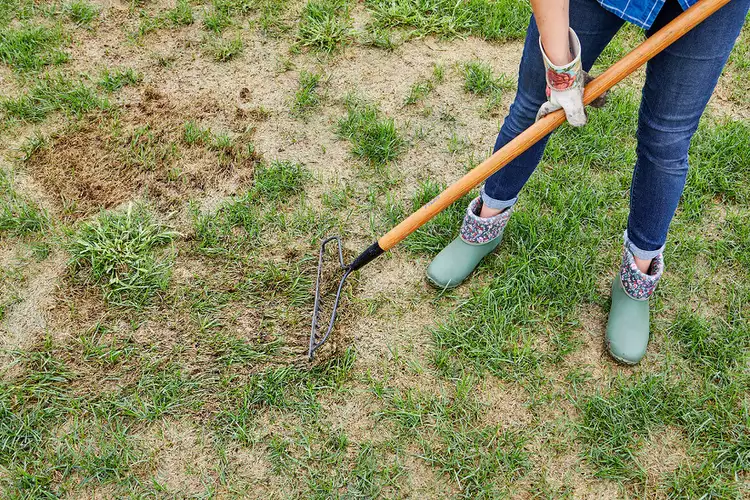Do Snails Eat Grass?
Last Updated on September 10, 2021 by Duncan
Before we discuss whether snails eat grass, it’s good to point out that many homeowners confuse snails with slugs, which are completely different organisms.
To clear the air, snails measure 2.5-4 cm long and feature coiled shells on their backs. Slugs, on the other hand, measure 3-25 mm long.
While they are different, they have their similarities. For example, both can be black, tan, green, or grey, leaving a trail of mucus behind.
Do snails eat grass?
A study done by Philip Williamson showed that snails would eat grass when the grass is in its juvenile stages, then stop eating it as it gets older.
According to Williamson, the aged grass is incorporated with silica that makes it tough to chew.
A study by the University of California supports this finding and reports that snails and slugs prefer eating turfgrass seedlings and herbaceous plants.
From the two reports, we can conclude that snails might not be a problem if you have an old lawn with tough grass as the snails won’t touch it.
However, these slimy little sliders might be a problem if you have freshly seeded or newly sprouted grass.
How can you tell your grass is being damaged by snails?
If you have snails on your lawn or garden, you most likely have the brown garden snail.
Unfortunately, it’s hard to tell your grass damage is due to the snails as the damage they cause is similar to that caused by caterpillars, earwigs, and other chewing insects.
It’s also hard to pin the insects to the damage as getting them in the act is hard. This is because you will rarely find them active during the day unless it’s cloudy.
You also won’t find them during extreme weather conditions (when it’s too hot or too cold) as they are hiding to protect themselves.
Despite these, several clues can help you link the damage to the snails:
Silvery slime trails
Snails always leave silvery mucus trails as they are sliding, so if you find the trails near the damaged grass, the snails are most likely the culprits.
The mucous trail is often invisible on the grass (unless it’s dry), so you should look for the trail on the nearby stones or wood pieces.
Irregular holes
Snails create irregular holes on the young grass as they are feeding, so if you see the slime and the holes on the grass are rugged, the damage is most likely caused by the slimy sliders.
Look hard enough
As mentioned, it’s not uncommon to find snails active when it’s cloudy, so you can walk out during a cloudy day and see if there are any snails on your lawn.
If you are up to it, you can stay up late and go to your lawn and see if you can find any snails there.
You will also find the snails in the areas where they hide during the day. They include: under stones, boards, debris, and weedy areas around tree trunks.
How do you get rid of snails from your lawn?
It’s easy to get rid of the snails when there are only a few of them, but if they have already formed a colony, it doesn’t mean you can’t eliminate them.
You need to make a few changes, and soon you will have a snail-free lawn. Some of the things you should do include:
Clean your yard
The purpose of doing this is to get rid of as many hiding places as possible.
Trim off leaves touching the ground, use footers to raise your containers, break up large dirt clods, and move the compost pile away from your yard.
Handpick the snails
Although tiring and time-consuming, when done right, it’s highly effective.
Go on a snail hunting escapade early morning, late in the evening, or on a rainy day and collect as many snails as you possibly can.
To have an easy time collecting the snails, attract them using their favorite foods.
Snails have been shown to go crazy for bran, melon rinds, moistened dry dog food, and shallow beer pans.
Place any of these foods under a board to provide a perfect snail gathering spot.
When you collect the snails, place them in a plastic bag, seal it and dispose of it in the trash can.
You can also put the snails in a bucket with soapy water or ammonia and dispose of them off once dead.
If you are that pissed off, crush the captured snails and let them rot in the garden.
Kill the snails with chemicals
Don’t have time to pick up the snails? Kill them with chemicals. One great chemical we have come across is the Deadline Force II. It’s more effective than pellets, so if you had used pellets before and it didn’t work, this is the one to go for.
Applying it is easy as all you need to do is apply it in the areas frequented by snails. Deadline Force II contains a snare and a power attractant that attracts the snails and kills them, leaving your lawn beautiful and snail-free.
You should note that while Deadline Force II is effective, it can be harmful to your pets and children, so if you have them in your home, protect them by going for safer options. One that we have come across is the Garden safe Snail Bait.
The bait is designed for use around pets and wildlife, so you have nothing to worry about if you have these. To use it, scatter the granules on the lawn or the soil and other areas where you want to get rid of the snails.
Parting shot
Unless you recently planted new turfgrass, you shouldn’t worry about the snails damaging the grass as they don’t.
However, if you are revamping your lawn and have new grass seedlings, you should move with haste and control the snails before they damage the young grass.
You can use any of the above methods to get rid of the slimy sliders. If you have pets and children, protect them using safer and environmentally friendly control methods such as using the Garden Safe Bait.


